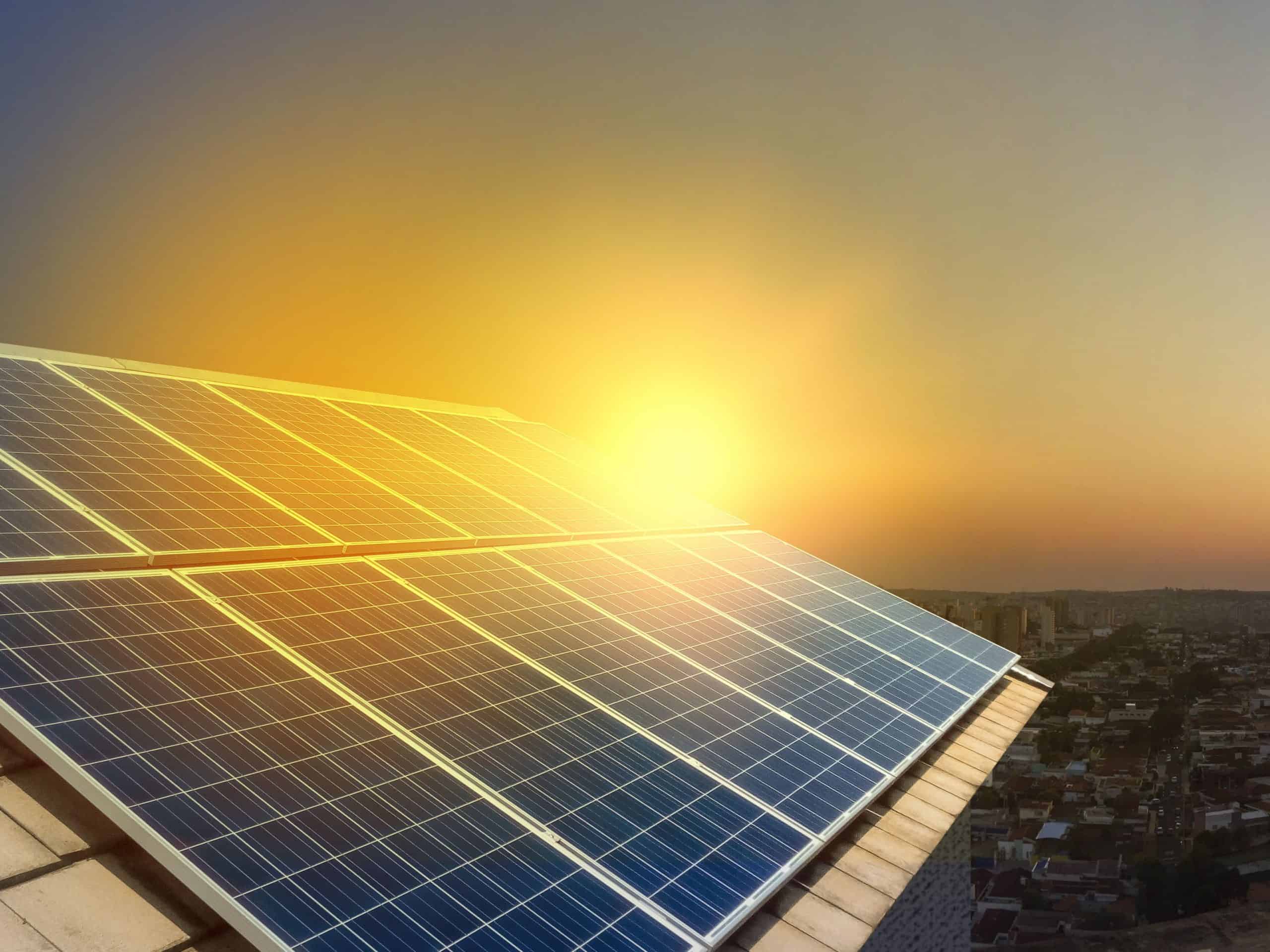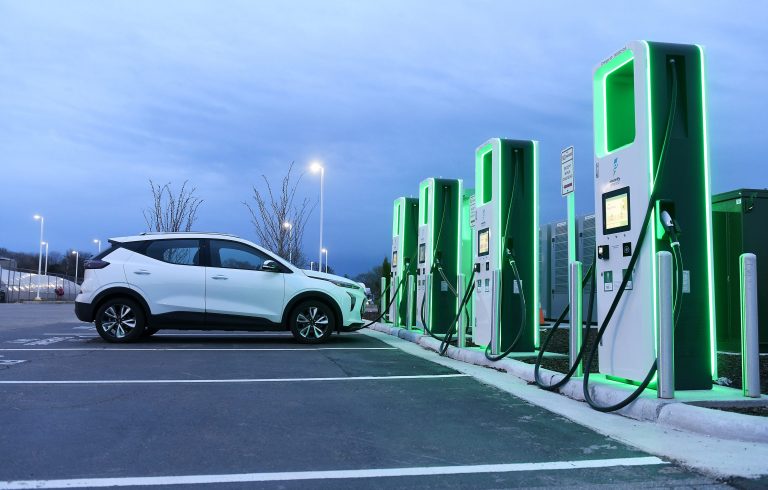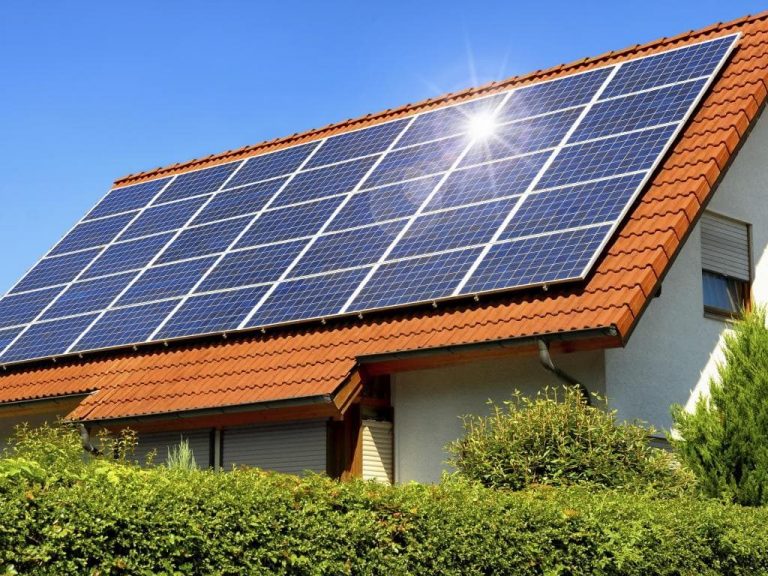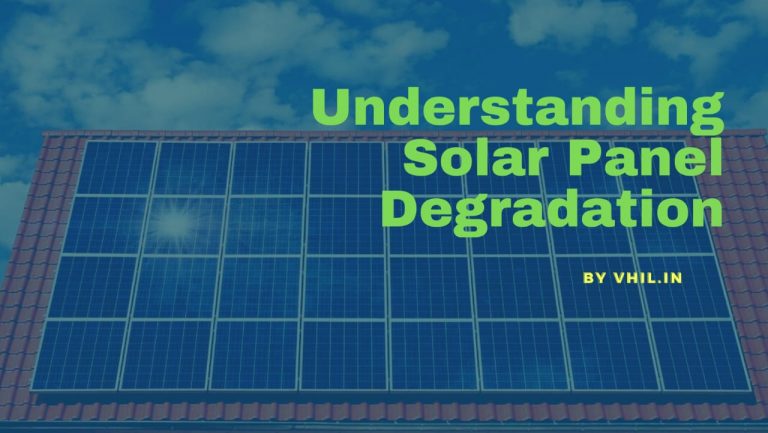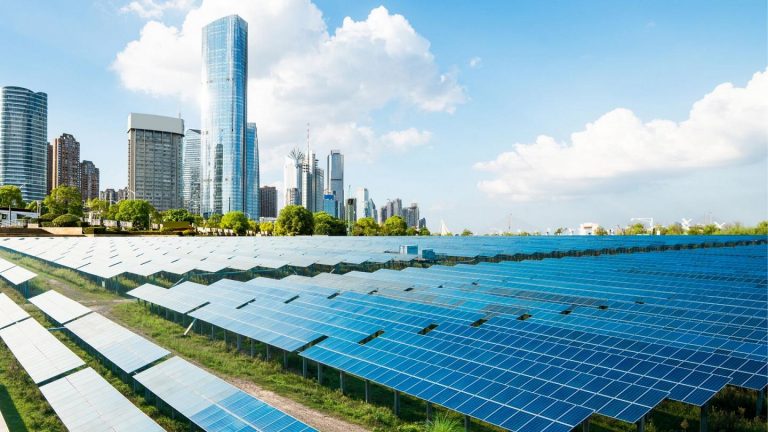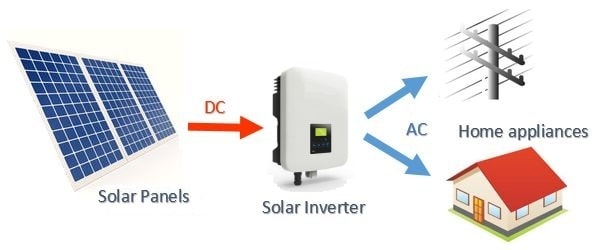Losses in a solar system 2021
We’re going to talk about the losses in a solar system for this article.
Solar Panels convert the incident sunlight into power based on the principle of the Photovoltaic Effect. Theories suggest that only 0.16% of Earth’s area is enough to empower the world’s energy demands, and the solar radiation for an hour could suffice our energy needs for a whole year.
It isn’t surprising that people are devising better and more efficient methodologies to extract this perpetual resource. But like all the other devices, solar panels can never be efficient. Solar panels have very low efficiency. The losses in a solar system are of different kinds.
For more on how solar panels work, check out “How do Solar Panels work?”
Before we get into the losses in a solar system, we need to understand a few basics. Not all silicon wafers can turn into efficient panels. There are some requisites for making solar cells.
Band Gap
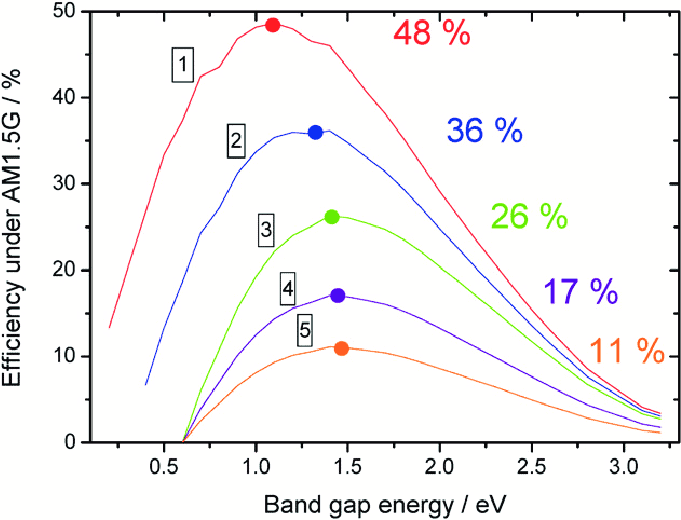
The Band Gap of the solar cell refers to the difference between the energy levels of the excited and ground-state electrons. These electrons are responsible for the conduction of electricity.
When designing solar cells, one needs to ensure that the bandgap is just fit — not too large or too small. If the bandgap is large, the photons (packets of light) pass without knocking out free electrons. It would reduce the efficiency of the cell. Likewise, if the bandgap is minuscule, those photons with excess energy will dissipate as heat. Again, a case of reduced efficiency. It is one of the determinants of losses in a solar system.
The best solar panels have a bandgap of 1-2 eV.
Absorption Coefficient
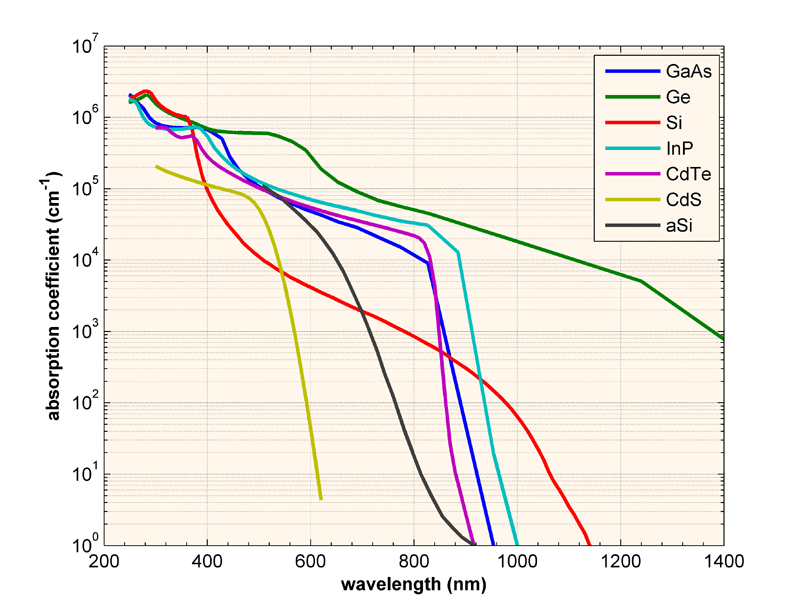
The absorption coefficient is directly proportional to the efficiency of the solar cells. That is why cells with high absorption coefficients (10^4/cm to 10^6/cm) are the most efficient. A high absorption coefficient enables the material to absorb photons and power electrons to reach higher energy levels easily.
Refractive Index
When constructing the panels, the layers should be of uniform refractive indices to prevent the light from reacting with the layers to form any other physical phenomena, mostly refraction.
Carrier Concentration
The concentration of the dopant atom in the junction needs to be proper when designing solar cells. Electron-hole pairs form while there’s also simultaneous recombination happening at the incidence of solar radiation. Recombination reduces the efficiency of the panels.
Let’s now move on to the losses in a solar system.
Losses in a solar system
Optical Losses
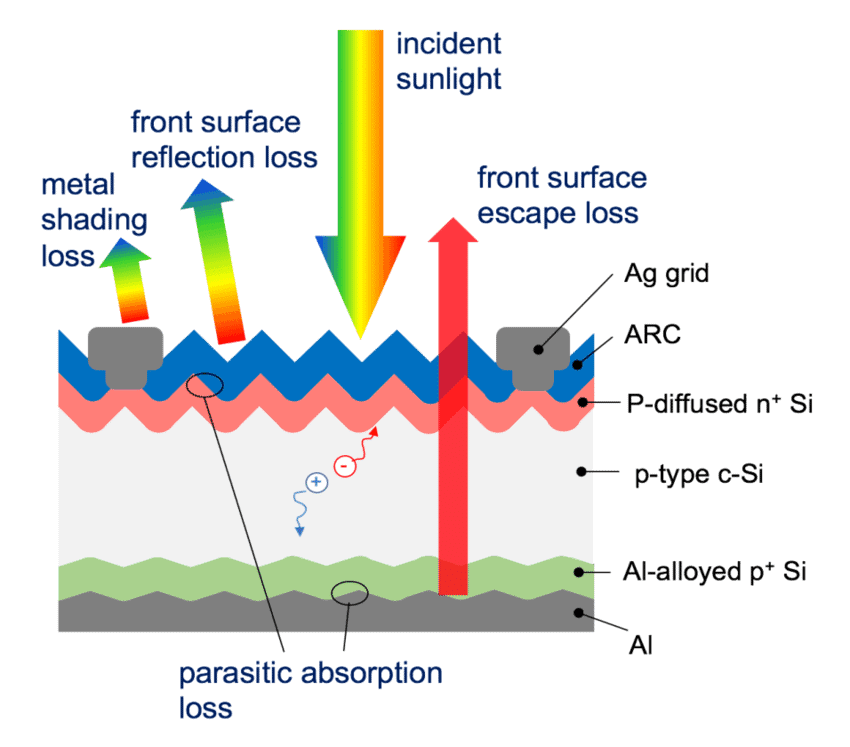
Optical losses are those where the incident sunlight fails to create the electron-hole pairs on the surface. A part of the incident radiation isn’t absorbed and instead reflected. This loss in terms of wasted sunlight is called optical losses.
Silicon surfaces usually have a reflectivity of 30%, owing to their high refractive index. We’ve explained more on this below.
Optical losses are of many kinds. Here’s describing them one by one.
Non-absorption
When the energy of the incident photon is lesser than the bandgap energy, it isn’t absorbed but transmitted. This incident energy ends up wasted because of non-absorption by the surface. It results in optical losses.
Non-absorption loss occurs when Ep<Eg.
Thermalization
We’d talked about photons with excess energy ending up unused by the solar cell. It is called thermalization loss. When the incident photon is of higher energy levels than the bandgap, it dissipates in the form of heat loss, hence the term “thermalization.”
This heat loss also has an added disadvantage. It increases the temperature of the solar cell, increasing the reverse saturation current, which decreases the open-circuit voltage. The increase in reverse saturation current is because of the increment in the concentration of intrinsic carriers.
Thermalization loss occurs when Ep>Eg.
These two losses together account for over half of incident solar radiation losses in a solar system.
Reflection and Transmission loss
Reflection losses are because of the reflection of the incident sunlight without absorption.
When the energy of the incident photon is higher than the bandgap, transmission losses occur. These losses are the most obvious in materials with a low absorption coefficient.
Area loss
It is because of the grid design of the panels. It is easy to reduce because you can use Anti Reflective Coatings to minimize it. The ARC reflects the light wave in a phase 180 degrees out of the light reflected by the panel. These two events cancel each other. It also ends up reducing reflection/non-absorption losses in a solar system.
Collection losses
The collection losses are mainly because of the impurities and crystalline defects in a cell. The recombination phenomenon happens at the contact surfaces and depletion region because of the impurities which reduce the photo-current.
One way to minimize this is to use the purest forms of material without many impurities and use a heavily doped metallic region. If lesser impurities are there in the panels, it can increase the diffusion length of the minority carriers, increasing its efficiency.
Resistance losses

The series and shunt resistance losses are one another category of losses in a solar cell. The series resistance is because of the total resistance of the semiconductor, diodes, and metal. Designing a system to keep the series and shunt resistance low is an obvious method of minimizing resistance losses in a solar system.
It concludes our list of the losses in a solar system. For more informative articles on PV equipment and related news, check out our blogs.
